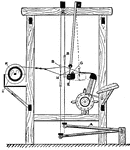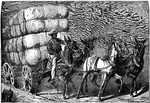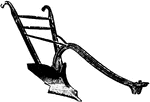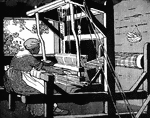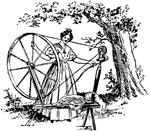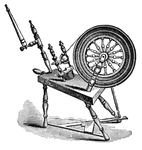
Jacquard Motion
Cotton manufacturing. Fig. 5D, Jacquard motion. The hooks are held upright by rods connected by spiral…

The Spinning Jenny
"The modern system of cotton manufacture dates no further back than back 1760. Prior the mechanical…

Mule
"In 1818 William Eator obtained a patent for a self-acting mule, in which the operations ordinarily…

Cotton Press
This cotton press design allowed for cotton to filter through a windlass, later received by the hoop.

Roving Frame
"This, which is the last required before the operations of spinning, strictly so called, commence, resembles…

Roving Machine
Cotton manufacturing. Fig. 5B, Roving machine with rack and pinion adjustment for raising and lowering…

Slubbing Frame
"The operation which succeeds that of the drawing frame is slubbing, where the sliver has a certain…

Tappet Motion
Cotton manufacturing. Fig. 2D, tappet motion: A, B, cams on shaft C, operate the tappet levers D, E…

The Mule
"Probably no inventive contribution has been offered to the cotton trade more important than the mule.…

Throstle
"The spinning frame, or throstle, is made with two sets of drawing rollers, one on each side. Between…
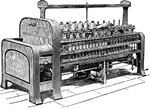
Throstle
"The spinning frame, or throstle, is made with two sets of drawing rollers, one on each side. Between…
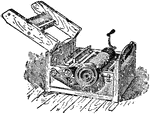
Whitney's Cotton Gin
A machine which separated the seeds from raw cotton more rapidly than could be done by hand.

Winding Machine
Cotton manufacturing. Fig. 4C, Warder's bobbin winding machine, with cam motion for raising and lowering…

